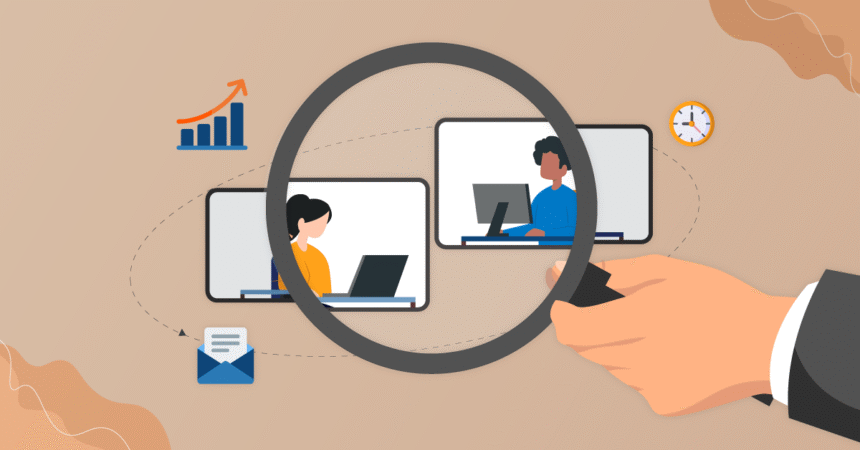Employee Monitoring Technology: Balancing Productivity and Privacy in 2025
In today’s fast-changing work environment, employee monitoring technology has become a common tool for many companies. These tools help organizations keep track of what employees do during working hours. But as technology advances, so does the question of how much monitoring is too much. In 2025, companies need to find a balance between improving productivity and respecting employee privacy. This article will explore how employee monitoring works, why companies use it, and how businesses can manage both productivity and privacy concerns.
What Is Employee Monitoring Technology?
Employee monitoring technology includes software and tools that watch what employees do while they work. It can track things like internet activity, emails, phone calls, and even computer screen activity. Some tools also record time spent on tasks, take screenshots, or monitor location via GPS. These tools are designed to help companies understand how work gets done and ensure employees are working efficiently.
Examples of employee monitoring tools include activity logs, time-tracking software, keystroke recorders, and facial recognition systems. These tools can be installed on computers or mobile devices and often run in the background without interrupting daily tasks.
Dont miss: Digital Minimalism: The Alarming New Trend Disrupting Online Users’ Habits
Why Do Companies Use Employee Monitoring Tools?
There are several reasons why companies choose to use monitoring technology. The main goal is to increase productivity. When managers can see how time is spent, they can identify bottlenecks and areas where employees may need support. Monitoring also helps prevent misconduct or misuse of company resources, such as inappropriate internet use or unauthorized downloads.
Another reason is security. Monitoring can prevent data leaks, protect sensitive information, and ensure that employees follow company policies. Additionally, some companies use monitoring tools to manage remote workers better, especially when employees are working from home.
Lastly, monitoring can help in measuring performance. If used ethically, it can be part of a larger system for giving employees feedback and recognition.
The Benefits of Employee Monitoring in 2025
When used responsibly, employee monitoring provides benefits for both companies and workers. Some of these benefits include:
- Improved productivity: Managers can see where employees spend their time and help guide efforts more effectively.
- Better resource management: Monitoring helps allocate resources wisely and reduce waste.
- Enhanced security: Detecting suspicious activity early can prevent cyber-attacks or data breaches.
- Remote work support: Employers can monitor remote workers to ensure they stay on task and meet deadlines.
- Performance tracking: Data from monitoring tools can help identify high performers and areas needing improvement.
These benefits can lead to a more efficient workplace, better results, and even increased employee engagement if used fairly and transparently.
Challenges and Concerns with Employee Monitoring
Despite its advantages, employee monitoring raises important concerns. Privacy is the biggest issue. Employees may feel uncomfortable or stressed if they think they are being watched constantly. Over-monitoring can damage trust between workers and management and lead to lower morale.
Another challenge is legal compliance. Different countries and states have rules about what kind of monitoring is allowed and what employees must be informed about. Failing to follow these rules can result in fines or lawsuits.
There is also the risk of misuse. If monitoring data is mishandled or accessed by unauthorized people, it can affect employee privacy and security. Furthermore, excessive monitoring can create a negative work environment where employees feel they have no privacy or independence.
Best Practices for Balancing Productivity and Privacy
To make effective use of employee monitoring while respecting privacy, companies should follow some best practices:
- Be transparent: Clearly explain what is being monitored, why, and how the data will be used. Employees should know their rights and have a say in monitoring policies.
- Set clear policies: Develop and share policies about monitoring that are fair and consistent. These policies should adhere to local laws and regulations.
- Limit monitoring to work-related activities: Focus on activities linked to job performance. Avoid tracking personal emails, chats, or private messages unless necessary and permitted by law.
- Use monitoring for support, not punishment: The goal should be to improve workflow and help employees succeed. Use data to provide feedback rather than to punish or spy.
- Secure data collected: Protect monitoring data from unauthorized access or leaks. Only authorized personnel should access sensitive information.
- Regularly review practices: Evaluate how monitoring affects employee morale and productivity. Adjust policies as needed to maintain a balance.
By following these guidelines, companies can foster a work environment that is both productive and respectful of privacy.
Employee Monitoring Trends in 2025
In 2025, employee monitoring technology has become more sophisticated and customizable. AI and machine learning are now used to analyze data more effectively. For example, AI can identify patterns that might indicate burnout or inefficiency before they become serious problems.
Many companies are also adopting more ethical monitoring practices. They focus on results rather than invasive oversight. For example, instead of watching every keystroke, some organizations use outcome-based monitoring, where the emphasis is on completing tasks efficiently and meeting goals.
Moreover, employee consent is now more common. Employers often ask for permission before implementing new monitoring tools and are more transparent about their use.
Finally, the focus is shifting toward creating a positive work environment. Monitoring is used as a support tool to help employees grow rather than as a way to catch mistakes or punish.
Conclusion
In 2025, employee monitoring technology plays a crucial role in how companies operate. It helps improve productivity, enhance security, and manage remote workers better. However, it also raises important privacy concerns. To succeed, organizations need to find a balance that respects employee rights while maintaining efficient workflows.
Clear policies, transparency, limited monitoring, and data security are key to achieving this balance. When done right, employee monitoring can be a helpful tool for both companies and workers, fostering a more productive and respectful work environment.
As technology continues to evolve, the importance of maintaining trust and respect between employers and employees will only grow. Companies that prioritize fairness and transparency will lead the way in creating workplaces where technology supports success for everyone.
Image source: Leapmax.ai




